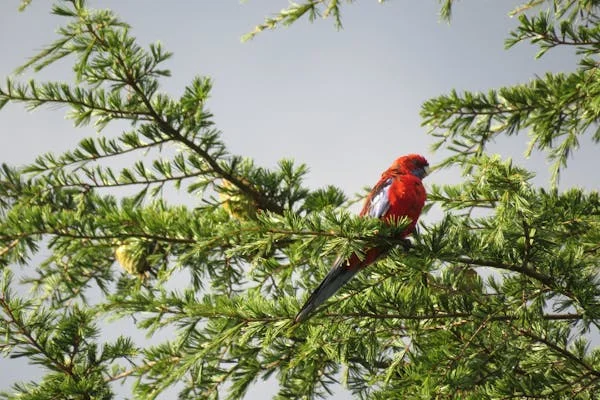Introduction
Naming new species is an essential part of zoology, helping scientists categorize and identify different animals. One interesting trend in taxonomy is the use of new homophone animal name, where animals are given names that sound like familiar words or phrases. This method of naming makes species more memorable, helps in public engagement, and often carries cultural or linguistic significance.
In this article, we will explore the concept of new homophone animal name, examples of animals with such names, and why this naming trend matters in science and conservation.
Understanding New Homophone Animal Name
What Is a Homophone?
A homophone is a word that sounds like another word but has a different meaning. In zoological naming, this concept is used to create species names that are phonetically similar to common words or famous names. This can be intentional or coincidental but often results in names that are easier to remember and discuss.
Why Use New Homophone Animal Name in Taxonomy?
The use of new homophone animal name serves several important purposes, including:
- Making Species Memorable: Unique names help both scientists and the public remember a species.
- Honoring Famous Figures: Some animals are named after well-known personalities or fictional characters.
- Enhancing Public Engagement: Creative names can attract attention and raise awareness about biodiversity.
- Scientific Organization: Naming follows strict guidelines to ensure clarity and consistency in classification.
Examples of New Homophone Animal Name
Several newly discovered animals have been given homophonic names, making them stand out in the world of taxonomy.
1. Bathynomus vaderi – The Darth Vader Isopod
- Discovered in 2025 off the coast of Vietnam.
- Named because it resembles Darth Vader’s helmet.
- Found in deep waters near the Spratly Islands.
- Feeds on crustaceans, fish, and whale carcasses.
The name vaderi sounds like Vader, linking it to the Star Wars character.
2. Hylaeus paumako – The Mourning Bee
- Found in Molokaʻi, Hawaii.
- Males are entirely black, an unusual trait.
- Name “paumako” means mourning in Hawaiian.
The homophone in this name connects to the bee’s dark coloration and cultural significance.
3. Atrax christenseni – The Newcastle Funnel-Web Spider
- Identified in 2025 in Australia.
- Named after Kane Christensen, an arachnologist.
- Lives in forested areas near Newcastle.
The name sounds similar to Christensen, blending personal tribute with taxonomy.
How New Homophone Animal Name Impacts Science
Using new homophone animal name affects the scientific community and the general public in various ways.
1. Simplifies Scientific Communication
- Easy-to-remember names make it simpler to discuss species.
- Helps students and researchers recall species more efficiently.
2. Increases Conservation Awareness
- Unique names draw public interest, encouraging conservation efforts.
- Catchy names can make fundraising for species protection easier.
3. Promotes Cultural and Linguistic Diversity
- Many names honor local traditions, languages, or historical figures.
- Helps bridge the gap between science and different communities.
Challenges in Naming Animals with Homophones
While using new homophone animal name is beneficial, it also presents some challenges:
1. Risk of Confusion
- Some names may sound too similar to existing species, leading to identification errors.
- Scientists must ensure that homophones do not create miscommunication.
2. Cultural Sensitivity
- Some names may be unintentionally offensive or inappropriate.
- Proper research is needed before finalizing a name.
3. Balancing Creativity with Scientific Accuracy
- While homophones make names interesting, they must still follow strict scientific naming conventions.
The Process of Naming New Animals
The International Code of Zoological Nomenclature (ICZN) sets rules for naming new species. The process involves:
- Discovery – Scientists find and document a new species.
- Analysis – The species is studied to confirm it is unique.
- Naming Proposal – Researchers suggest a name, often based on physical traits, location, or homophones.
- Peer Review – Experts review and approve the name.
- Publication – The name becomes official once published in a scientific journal.
Comparison of New Homophone Animal Name Examples
| Species Name | Homophone Connection | Year Discovered | Location | Key Feature |
| Bathynomus vaderi | Sounds like “Vader” | 2025 | Vietnam | Resembles Darth Vader’s helmet |
| Hylaeus paumako | Hawaiian for “mourning” | 2025 | Hawaii | Males are entirely black |
| Atrax christenseni | Sounds like “Christensen” | 2025 | Australia | Named after an arachnologist |
Conclusion
The use of new homophone animal name in taxonomy adds a unique layer to species identification. By using names that sound like familiar words or honor cultural figures, scientists can make discoveries more accessible and engaging. This trend not only simplifies communication but also strengthens conservation efforts by attracting public interest.
As new species continue to be found, the practice of creative and meaningful naming will evolve, ensuring that scientific discoveries remain memorable and impactful for generations to come.
Frequently Asked Questions
What is a new homophone animal name?
A new homophone animal name is a species name that sounds like a common word or phrase but has a different meaning in zoological taxonomy.
Why do scientists use homophone names for animals?
Scientists use homophone names to make species memorable, honor cultural or linguistic references, and improve public engagement in biodiversity.
How are new homophone animal names created?
These names are formed based on physical traits, geographic location, cultural significance, or phonetic similarity to everyday words.
What are some examples of new homophone animal names?
Examples include Bathynomus vaderi, named for its resemblance to Darth Vader’s helmet, Hylaeus paumako, a Hawaiian bee named for its dark color, and Atrax christenseni, a funnel-web spider honoring an arachnologist.
How does a homophone name help in conservation?
A catchy name attracts public interest, making it easier to raise awareness, secure funding, and promote conservation efforts for endangered species.







